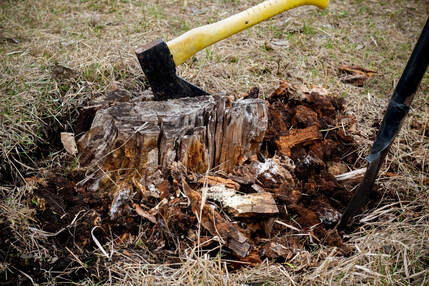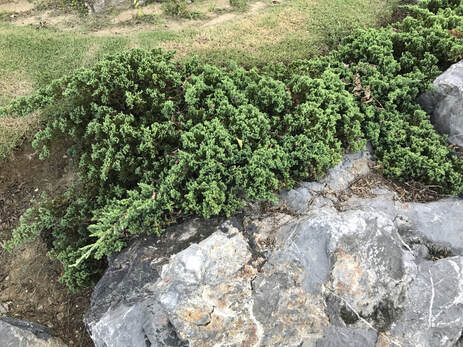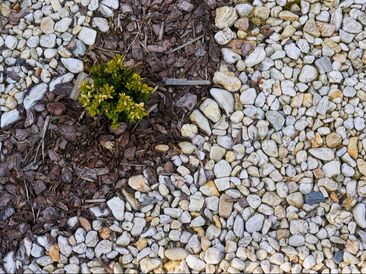 Getting tree stump removal service can enhance the look of your outdoor space. Though, you’re left with the question, “What to do when the stump is removed?” After the stump is gone, you’re left with wood chips and a hole. The wood chips will ultimately decay, but the gap must be filled with soil to level out your yard. Below are some things to do when your stump is removed. Tools If you’re going to work in your yard, you’ll want a couple of things handy before you begin: rake, grass seeds, clippers/saw, and topsoil. Debris-Free If you want your outdoor area to look like it used to, you’ll have to remove any debris left inside the stump. Grass doesn’t grow on wood chips, so first things first, clear away everything with your rake. If you have exposed roots, cut them with your clippers or saw. Put on Some Soil You want to cover the hole to around the same height as the rest of your lawn. This could take a few bags of topsoil. Make sure that none of the soil is clumped together. Even out the dirt but leave a couple of inches so it can lay when you start to water. Seeding Since you’re spreading the grass seed by hand, you’ll want to get good coverage. Criss-cross the way you toss the seeds. Be sure to use an ample amount per square inch. Prepare the Soil Once you’re happy with your application, push the seeds into the soil. You do this by raking the seeds into the topsoil. Then, put a ¼ of soil on top. Instead of soil, you can use peat moss. Upkeep If the area is dry, then the grass will not grow. On the other hand, you don’t want to water too much and wash the seeds away. Water your seeds and soil using a fine mist. This keeps the soil moist. Professional Services Having a healthy-looking yard is a job, and stump removal isn’t a DIY job. This is when you want to hire a professional that offers stump removal in Rochester. Get going on making your outdoor area appear attractive and open!  Planting on slopes usually creates problems when it comes to regular upkeep. Also, you might not get the desired results from watering your trees that you might wish. You could do plenty more to increase your odds of success by picking specific trees that are a good fit for hills. Another positive when it comes to planting trees and hills is that you can reduce erosion by planting trees on slopes. Hills and Trees Some might ask themselves if it’s worth the energy to seek out a slope-friendly tree and there are lots of reasons why it is. Number one, some folks could live on a hill or in a hilly area. In this case, there’s no choice but to seek out trees that work. Besides, there are visual appeal reasons. A tree-covered slope is something to see. Erosion could be the main reason why folks want to plant trees on a hill. When rain falls on a slope, it usually washes soil towards the bottom. Another name for this is soil erosion. Over time, this can affect your yard by making gullies and unearthing plants. One of the most significant ways you can combat soil erosion is via smart landscaping. Planting trees is a solid choice. These trees will absorb the water on the slope instead of letting it drip to the bottom. Best Trees Not all trees are created equal. Coniferous trees may be the prize winner because of their possible size. Most big trees aren’t right for slopes, but these are the exception. The top evergreen options are pine, juniper, and fir. If your goal is to get more shade in your yard, you might want to look for trees that deliver some shade. You might want to go for the red alder or the sugar maple. Remember, you want to choose reasonably-sized trees that are innately hardy. Flourishing on a hill can be more difficult than on flat ground because sensitive trees usually don’t grow well. Hedging Your Bets You may want to link your trees with other plants and landscaping techniques to avoid erosion and enhance the apace. Based on how steep the hill is, you may need multiple choices. One is a retaining wall. Usually retaining walls are added to an outdoor space after you get stump removal service. If you are on a budget, an affordable option is mulch which works on moderate hills. 4/13/2019 Using Ground Cover Plants Under Trees Creeping Juniper makes a great groundcover Creeping Juniper makes a great groundcover Trees make lovely focal points in any outdoor space, but the area around their trunks can sometimes be an issue. Grass can have a difficult time thriving around roots, and the shade a tree provides can deter even the hardiest of flowers. Don’t leave the area around your tree bare! Instead, put a gorgeous ground cover under your trees! Border your trees with ground cover circles, and you’ll have a landscape that looks polished and professional. Ground Cover Plants Select your ground cover plants based on the tree type. Some trees, such as maple, have full coverage and give no sunlight beneath. Some have tiny leaves and thin branches, providing you with more choices to pick from. Find out how big each plant type will ultimately expand to decide how many you’ll need to cover the whole area surrounding the tree. Some top picks for ground cover plants under trees are violets, periwinkles, and junipers. Planting Ground Covers Tips Like any other project, planting ground covers under a tree begins with prep work. You can plant ground coverage any time, any day of the year. However, it is recommended that you do it in late fall or early spring for the best results. Put a circle around the grass at the tree trunk to denote the size of your planned bed. Put the garden hose on the ground to show the dimensions of the bed or stain the area with paint. Dig in the circle and remove all weeds and grass. With a trowel, dig holes for the ground cover plants. Vary digging the holes for the best coverage. Put some all-purpose fertilizer in every hole before putting the plants in place. Put plenty of room between each plant to let them grow in the space freely. You also want to put mulch between every plant to cover emerging roots and help retain moisture. Every week you want to water your plants until they start growing and taking root. At this point, the rain will provide all the water your plants require. If you want more information on plant ground covers, call a Rochester stump removal business.  When you finish planting new flowers, shrubs, and trees, you need to bring a final touch - this is where mulch comes in. Mulch makes your outdoor space appear polished and clean. Is it essential what type of mulch you use? Should you perhaps use stones instead? Below are the pros and cons of having a landscape with rocks or mulch. Pros and Cons of Mulch (the organic kind) Pros
Cons
Pros and Cons of Using Rocks in Your Landscape Pros
Cons
The answer to whether mulch or stone is a better choice for your landscape? Mulch is a better option than stone, however rock is better than no mulch at all. Trees and shrubs have moisture requirements, contact a local arborist if you want to find out the needs of the trees in your landscaping. |
AuthorWrite something about yourself. No need to be fancy, just an overview. Archives
December 2020
CategoriesAll Insects & Diseases Questions & Answers Tools & Safety Trees & Landscaping Tree Stump Basics |
- Home
- Services
- About
- Contact
-
Service Areas
- Rochester NY Stump Removal
- Brighton Stump Removal
- Chili Stump Removal
- Churchville Stump Removal
- East Stump Removal
- Fairport Stump Removal
- Farmington Stump Removal
- Gates Stump Removal
- Greece Stump Removal
- Henrietta Stump Removal
- Irondequoit Stump Removal
- North Gates Stump Removal
- Parma Stump Removal
- Penfield Stump Removal
- Perinton Stump Removal
- Pittsford Stump Removal
- Victor Stump Removal
- Webster Stump Removal
- Blog
- Home
- Services
- About
- Contact
-
Service Areas
- Rochester NY Stump Removal
- Brighton Stump Removal
- Chili Stump Removal
- Churchville Stump Removal
- East Stump Removal
- Fairport Stump Removal
- Farmington Stump Removal
- Gates Stump Removal
- Greece Stump Removal
- Henrietta Stump Removal
- Irondequoit Stump Removal
- North Gates Stump Removal
- Parma Stump Removal
- Penfield Stump Removal
- Perinton Stump Removal
- Pittsford Stump Removal
- Victor Stump Removal
- Webster Stump Removal
- Blog
Search by typing & pressing enter

 RSS Feed
RSS Feed